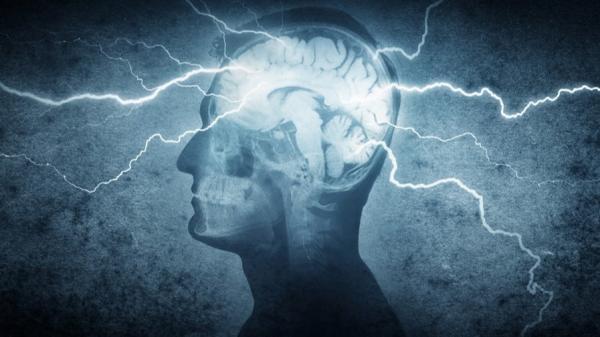Mental health watchdog says new study on electroshock and increased suicide risks reinforces calls for a nationwide ban.

—
A recent study published in Acta Psychiatrica Scandinavica found that after receiving electroshock, also known as electroconvulsive therapy (ECT), patients were 44 times more likely to die by suicide than people in the general population.[1] The mental health industry watchdog, Citizens Commission on Human Rights (CCHR) International says this study adds weight to consumer and expert calls for ECT to be banned.
Jan Eastgate, President of CCHR International, states, “Electroshock is a brutal practice administered to over 100,000 Americans every year, including children ages 0-5 years of age. Psychiatrists often claim ECT can prevent suicide, but this study clearly shows this is not the case. Add to this the fact that electroshock causes memory loss and brain damage, which can incapacitate the person and drive them into such despair as to commit suicide.”[2]
The latest study from researchers at Aarhus University in Denmark used nationwide registers and identified all patients that initiated ECT between 2006 and 2016. Among the patients who received electroshock, 161 (1.4%) died from suicide within two years—electroshock patients had a substantially elevated suicide rate.[3]
Notably, among male patients aged 50-69 years, a whopping 17% died from suicide in the two years following ECT.
This adds weight to an earlier study published in the Journal of Clinical Psychiatry in 2022, that determined electroshock treatment does not decrease the risk of death by suicide, contrary to its proponents’ claims.
According to a 2022 study by psychologist John Read, Ph.D., and psychiatrist Joanna Moncrieff, M.D., “With the World Health Association and the United Nations calling for a paradigm shift away from the medicalization of human distress, new evidence about millions of people struggling to get off antidepressants, and ongoing debate about the value and safety of electroconvulsive therapy (ECT), it seems timely to discuss these two longstanding treatments offered to us by biological psychiatry’s ‘medical model’ when we become sad, or depressed.”[4]
The fact that electroshock not only does not prevent suicide but can also induce it and causes brain damage is yet another reason why ECT should never be forced on patients—a practice that the United Nations Committee on Torture has called torture.
Expert Kenneth Castleman, who holds a Master’s degree in electrical engineering and a Ph.D. in Biomedical Engineering, notes that two things happen when an electric current flows through the brain: Electrical energy is converted into heat inside the brain, raising its temperature. The larger the current, the more heat is produced. If the temperature gets too high, the cells will suffer temporary injury, permanent damage, or even death. The second effect results from the pulsing nature of the voltage applied by ECT machines. This process of alternately pulling and tugging on the cell membrane creates a jackhammer effect that can tear holes in cell walls. This process is called “electroporation,” the creation of pores (holes) in the cell wall by electrical means. As little as one volt across the cell membrane can cause damage.[5] These processes can amount to brain damage.
Consumers can seek redress through the courts for ECT damage. Additionally, they should never be told that ECT is “life-saving” or prevents suicide and if told this, they can sue any responsible psychiatrist, hospital, or psychiatric association that imparts this as fact, constituting consumer fraud.
The ultimate solution to protect patients is to ban this outdated and harmful practice, CCHR says, and in doing so protect patients’ lives.
Anyone whose mother, wife, sister or father, brother, son, child, or friend has been killed or damaged by psychiatric “treatment,” including electroshock, should report this to CCHR.
Click here to find out more information on electroshock.
[1] Peter Simons, “ECT Does Not Seem to Prevent Suicide,” Mad In America, 17 Feb. 2023, www.madinamerica.com/2023/02/ect-does-not-seem-to-prevent-suicide/
[2] John Read, Ph.D., Joanna Moncrief, M.D., “Depression: why drugs and electricity are not the answer,” Psychological Medicine, Cambridge University Press, 1 Feb. 2022, www.cambridge.org/core/journals/psychological-medicine/article/depression-why-drugs-and-electricity-are-not-the-answer/3197739131D795E326AE6913720E6E37
[3] Anders Spanggård, Christopher Rohde, Søren Dinesen Østergaard, “Risk factors for suicide among patients having received treatment with electroconvulsive therapy: A nationwide study of 11,780 patients,” Acta Psychiatrica Scandinavica, 29 Jan. 202, onlinelibrary.wiley.com/doi/pdf/10.1111/acps.135363
[4] www.cchrint.org/2022/02/07/new-study-tells-consumers-the-truth-of-potential-lethal-electroshock-and-antidepressant-risks/, citing John Read, Ph.D., Joanna Moncrief, M.D., “Depression: why drugs and electricity are not the answer,” Psychological Medicine, Cambridge University Press, 1 Feb. 2022, www.cambridge.org/core/journals/psychological-medicine/article/depression-why-drugs-and-electricity-are-not-the-answer/3197739131D795E326AE6913720E6E37
[5] www.cchrint.org/2019/07/02/psychiatrists-got-it-wrong-on-electroshock-wsj/; Kenneth R. Castleman, Ph.D., “How Electroshock ‘Works,’” www.cchrint.org/ect-basics/
Contact Info:
Name: Amber Rauscher
Email: Send Email
Organization: Citizens Commission on Human Rights International
Address: 6616 Sunset Boulevard, Los Angeles, California 90028, United States
Phone: +1-323-467-4242
Website: https://www.cchrint.org
Source: PressCable
Release ID: 89091139
If you detect any issues, problems, or errors in this press release content, kindly contact error@releasecontact.com to notify us. We will respond and rectify the situation in the next 8 hours.